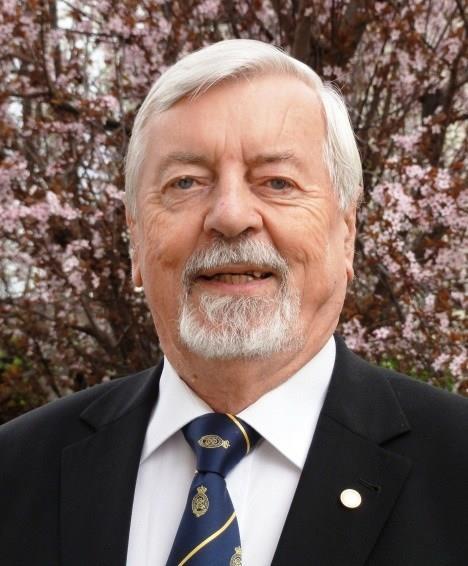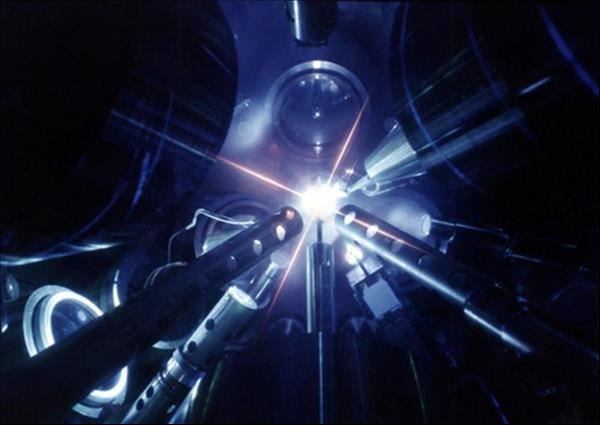
Hydrogen-boron fusion could be a dream come true
(MENAFN- Asia Times) The various fields of science and technology are so closely connected that a breakthrough in one area can rapidly trigger a chain reaction of breakthroughs in other areas. The 'impossible' becomes possible, the difficult becomes easy. Ideas, long since abandoned as hopelessly difficult to realize, suddenly take on new lives.
Hydrogen-boron fusion is one example. In principle, the fusion reaction between nuclei of hydrogen and boron could provide a highly efficient, radioactivity-free form of nuclear energy with practically unlimited fuel reserves. The reaction produces no dangerous penetrating radiation and no radioactive waste, but only stable alpha particles, whose electrical charge even permits a direct conversion of fusion energy into electricity.
These advantages have long been known, but until recently the physical conditions thought necessary for a hydrogen-boron reactor – including temperatures of billions of degrees Celsius – seemed far beyond anything one might expect to achieve in the foreseeable future.
In the meantime, the situation has changed radically, thanks to the development of laser systems which can generate ultra-short pulses in the range of a few femtoseconds (one femtosecond equals a millionth of a billionth of a second), and the discovery of a method for amplifying such pulses by factors of a trillion or more.

The method is called chirped pulse amplification (CPA), for which its discoverers, Gérard Mourou and Donna Strickland, were awarded with Nobel Prize in 2018. With the help of CPA, it's possible to concentrate sufficient energy into an ultra-short pulse so that it reaches powers in the range of petawatts (a million billion watts). That is more than 100 times the power of all the world's electric power stations combined – albeit only for a tiny instant of time.
At the focus of such a laser pulse, light intensities of the order of thousands of billions of billions of watts per square centimeter are reached, comparable to what we would get if the entire energy reaching the Earth from the Sun, were concentrated onto a single millimeter-sized spot. Physicists call this 'extreme light.'
What matters are not the mind-boggling numbers, but the fact that entirely new things happen when these laser pulses interact with matter. Extreme light is one of the most exciting areas of basic and applied physics, with revolutionary implications for the future of technology.
Not least of all, extreme light is rewriting the rules of nuclear fusion.
The approach of using lasers to trigger fusion reactions has been pursued for nearly half a century. The basic concept is to bombard a tiny spherical pellet of fuel from all sides by simultaneous pulses of energy, causing the pellet to compress to high densities and to heat up to the temperatures necessary for fusion reactions to occur. A combination of super-high temperature and super-high density is necessary in order to reach so-called ignition – a condition in which the reaction process becomes self-sustained, resulting in an efficient 'microexplosion' releasing large amounts of energy.
Pursuit of this overall approach has led to the construction of the world's largest laser, the $3 billion-plus National Ignition Facility (NIF) at the US Lawrence Livermore National Laboratory.
NIF operates not with the hydrogen-boron reaction, but rather with the reaction between the hydrogen isotopes deuterium (D) and tritium (T), which is much easier to achieve. The D-T reaction requires temperatures of 'only' around 100 million degrees, and has vastly higher reaction rates than hydrogen-boron. Unfortunately, despite some solid accomplishments, NIF has failed to reach its assigned goal of achieving 'ignition.' The prospects for commercially viable laser fusion power stations based on the NIF approach have receded farther into the future.
Given that the hydrogen-boron reaction is incomparably more difficult to realize than D-T, and D-T has proven so stubbornly difficult, why are we talking about hydrogen-boron at all?
The reason is that the novel behavior of matter under the impact of 'extreme light' makes possible a short-cut strategy to ignite a hydrogen-boron mixture without having to worry about heating and compressing it. The NIF and similar installations for laser fusion were not designed to exploit the relevant phenomena.
To put it crudely: We take a small amount of the fuel, shaped in the form of a cylinder, and hit it on one end with a laser pulse. It turns out that when a laser pulse is sufficiently short, sufficiently powerful, and has a sufficiently 'clean' form, very little of the energy goes into heating. Instead, the main effect is to accelerate exposed layers of the fuel to super-high velocities – 1,000 kilometers per second or more.
By a nonlinear mechanism, the energy of the laser pulse is converted with high efficiency into directed motion of the electrons and nuclei of the fuel, rather than the random motion associated with heat. In a manner analogous to a beam of particles, but with trillions of times higher density, an inwardly accelerated fuel layer rams into the adjacent fuel, igniting an avalanche of hydrogen-boron reactions, resulting in a high-temperature 'burn wave' which propagates down the axis of the cylinder.
The inventor of this strategy, the Australian physicist and long-time laser fusion expert Prof. Heinrich Hora, can point to a long series of experiments and theoretical calculations which back up his approach. These include experiments by several international research groups, demonstrating the actual generation of hydrogen-boron reactions by ultra-short, ultra-high-power laser pulses. In recent years the number of reactions detected has been increasing by leaps and bounds. The latest of these, carried out at the PALS laser facility in Prague, Czech Republic and reported earlier this year, yielded more than 10 billion reactions, with the pathway open for improving the yield by further orders of magnitude.

Professor Heinrich Hora has put forward a roadmap of research and development aimed at building a prototype hydrogen-boron power plant over the next 8-10 years
Although many questions remain to be answered, it looks as if the dream of a hydrogen-boron fusion reactor has a serious chance of becoming a reality.
Hora has put forward a roadmap of research and development aimed at building a prototype hydrogen-boron power plant over the next 8-10 years. This prototype would be much smaller and far simpler to build and operate than ordinary nuclear plants, and poses no significant safety issues. According to Hora the price tag would be about $80-100 million. That is peanuts compared the cost of building a prototype for a new fission reactor design. Bear in mind that nuclear fission is a mature technology, with some 450 power reactors in commercial operation (see my article: Nuclear energy to the rescue: France got it right ); whereas hydrogen-boron is still at an experimental stage.
But anyone who looks into it will be impressed both by the strategy, the roadmap and the high-level scientific cooperation which has begun to form around it. The list of co-authors of Hora's technical publications on the hydrogen-boron reaction includes leading scientists from laser laboratories and national research centers in the US, China, Israel, Australia, Iran, France, Italy, Spain, the Czech Republic and Poland. Patents have been granted in the US, China and Japan and are pending in Europe. Hora has founded a company, HB11 Energy, which intends to raise investor funds and 'farm out' various research and development tasks to existing facilities around the world.
In this article series I'll talk first about the hydrogen-boron nuclear reaction, followed by some necessary ABCs of fusion, how the breakthrough technology of chirped pulse amplification works, the basic physics of Hora's approach, experimental progress to date, and finally what a prototype for a hydrogen-boron fusion reactor would look like. The series will be rounded out by an interview with Prof. Heinrich Hora.
The series will be accessible to a general readership but include some information that knowledgeable readers will find interesting.
Jonathan Tennenbaum received his PhD in mathematics from the University of California in 1972 at age 23. Also a physicist, linguist and concert pianist, he's a former editor of FUSION magazine. He lives in Berlin and travels frequently to Asia and elsewhere, consulting on economics, science and technology.
Asia Times Financial is now live. Linking accurate news, insightful analysis and local knowledge with the ATF China Bond 50 Index, the world's first benchmark cross sector Chinese Bond Indices. Read ATF now.
Get Asia Times Daily in your inboxFast Accurate News, Commentary and Analysis of Asia
Get Asia Times Daily in your inbox Subscribe
Legal Disclaimer:
MENAFN provides the
information “as is” without warranty of any kind. We do not accept
any responsibility or liability for the accuracy, content, images,
videos, licenses, completeness, legality, or reliability of the information
contained in this article. If you have any complaints or copyright
issues related to this article, kindly contact the provider above.
















Comments
No comment